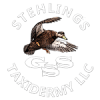Turkey Calling: Tips and Techniques
Turkey calling is an essential skill for hunters looking to lure these elusive birds into range. Effective calling can make all the difference between a successful hunt and a disappointing one. In this article, we’ll explore the basics of turkey calling, various call types, and provide tips and techniques to help you improve your skills.
Understanding Turkey Communication
Turkeys communicate through a variety of vocalizations, including clucks, yelps, purrs, and gobbles. Each call serves a specific purpose, such as:
- Clucking: A basic form of communication, often used by hens to locate each other.
- Yelping: A high-pitched call used by hens to communicate with poults or other hens.
- Purring: A soft, rolling call often made by contented turkeys.
- Gobbling: A loud, resonant call made by male turkeys to announce their presence.
Types of Turkey Calls
- Box Calls: A simple, handheld call that produces a range of sounds.
- Slate Calls: A call made by running a striker over a slate surface to produce various sounds.
- Mouth Calls: A call made using the hunter’s mouth and vocal cords.
- Diaphragm Calls: A call inserted into the hunter’s mouth to produce a range of sounds.
Tips and Techniques
- Start with basic calls: Master the basic yelp and cluck before moving on to more complex calls.
- Practice regularly: Regular practice will help you develop your calling skills and build confidence.
- Listen to turkeys: Pay attention to the sounds turkeys make in the wild and try to mimic them.
- Use calls strategically: Use calls to attract turkeys, but avoid over-calling, which can spook birds.
- Vary your calling: Mix up your calling to keep turkeys interested and engaged.
Advanced Techniques
- Cutting: A high-pitched call used to stop a gobbler in its tracks.
- Assembly calling: A series of calls used to gather multiple turkeys.
- Lost calling: A call used to mimic a lost turkey, often used to attract a gobbler.







